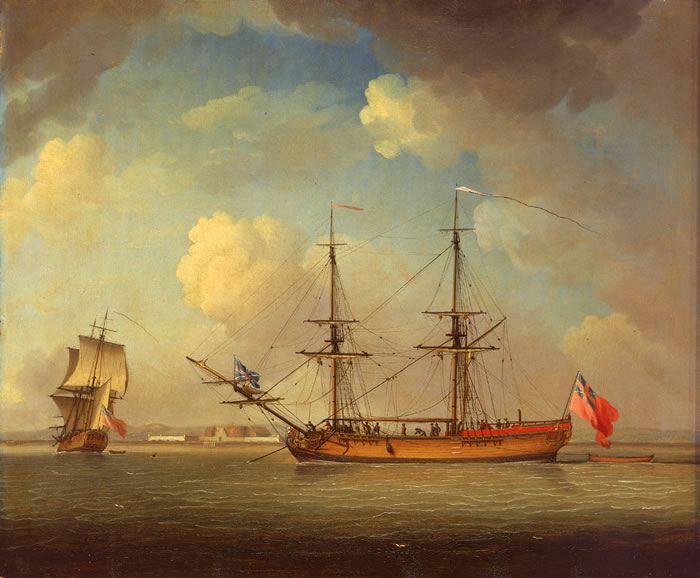| References found in relation to ships named Molly |
| 1. The disappearing islands of the Chesapeake by William B. Cronin Page 42 |
| 2. Liverpool Registry of Merchant Ships by Robert Craig; Rupert Jarvis |
| 3. Dictionary of American Naval Fighting Ships 1776. Bernhard, 1999, p286 |
| 4. Ships of Bermuda - 1750-1799 |
The disappearing islands of the Chesapeake
Brig Reprisal, built originally as the merchant vessel Molly. ...
Angered by the British standing in the way of a ship trying to enter their port, ...
Liverpool Registry of Merchant Ships
In the register of Liverpool merchant shipping, begun in 1786 under the ....
omission from the index of Robert Bibby, master of the 239 ton Molly. ...
Dictionary of American Naval Fighting Ships 1776
Andrew Doria departed Newport on 10 August in company with Columbus, but after cruising together for more than a week they encountered a British ship-of-the-line and fled in opposite directions, with Andrew Doria headed for waters off Bermuda. Biddle soon came upon a large heavily laden ship and ordered the stranger to "heave to and send your master on board." The prize proved to be Molly, which had belonged to a Jonathan Hudson of Maryland, but had been seized early in the war by Virginia's Governor Dunmore. Commanded by Bridger Goodrich, a member of a large and highly unpopular Norfolk Tory family, Molly had left Hampton Roads carrying some 15,000 bushels of wheat which Dunmore had confiscated from the the plantations of Virginia patriots and was sending to Halifax, Nova Scotia, for the use of royal troops gathering there in preparation for planned offensive operations against New York. Biddle removed Molly's Tory sailors and two slaves and replaced them with a prize crew. Molly reached Philadelphia on 17 September.
The day after she took Molly, Andrew Doria captured another vessel belonging to Dunmore's fleet, the brig Maria, with his loyalist followers and their belongings. Four slaves were among the passengers, and Biddle brought them on board his ship before letting the Tory refugees continue their voyage to Bermuda. The following day, the 110-ton merchant brigantine Lawrence fell into Biddle's hands, yielding a cargo of rum, sugar, limes, sea coal, copper, and tinware. Lawrence was soon followed by another 110-ton brigantine, Elizabeth, which was carrying cargo to support the British forces that were invading New York. Both vessels arrived safely at Rhode Island and were tried on 1 October. Soon thereafter, the brig Betsy-another of Dunmore's fleet evacuating Tories from Gwynn's Island- became a prize and, after removing her slaves, Biddle let her proceed. Biddle's next victim-the brig Peggy, bound for St. Augustine, Fla., with more of Dunmore's loyalists-was sent to Providence under a prize crew.
From the four of Dumnore's vessels, Biddle had freed 15 slaves. He kept them on board for a few days more, cruising near Bermuda, and then headed for the Delaware capes which he entered on the morning of 17 September. After sailing up Delaware Bay, he anchored at Chester, Pa., that evening. This ended his last cruise in the brigantine, because he had been selected to command Randolph, one of the four new frigates being built at Philadelphia for the Continental Navy. Capt. Isaiah Robinson took command of Andrew Doria, and he took her down the Delaware on 17 October for a voyage to the West Indies to obtain a cargo of munitions and military supplies at St. Eustatius. When she reached that Dutch island on 16 November, Andrew Doria fired a salute of 11 guns and received a reply-the first salute to an American flag on board an American warship in a foreign port.

